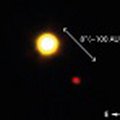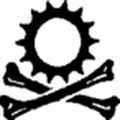-
Hack Chat Transcript, Part 2
01/15/2020 at 21:04 • 0 comments![]() Btw given the topics you cover on your website , I would like to share a link to another project: https://projectpanoptes.org/ Basically it's a DIY telescope specifically designed to discover exoplanets
Btw given the topics you cover on your website , I would like to share a link to another project: https://projectpanoptes.org/ Basically it's a DIY telescope specifically designed to discover exoplanets![]()
Home - Project PANOPTES
PANOPTES is a citizen science project which aims to build low cost, robotic telescopes which can be used to detect transiting exoplanets.
![]() I have no idea how to build it, and I think it's expensive , but the people interested in DIY projects might light like
I have no idea how to build it, and I think it's expensive , but the people interested in DIY projects might light like![]() Just to get the thumbnail in the chat...
Just to get the thumbnail in the chat...![]() Yes, thank you
Yes, thank you![]() That's actually really interesting - I'll have to check that out a little further.
That's actually really interesting - I'll have to check that out a little further.![]() Great!
Great!![]() yeah, I remember asking them about the price and they said 5000 dollars per unit
yeah, I remember asking them about the price and they said 5000 dollars per unit![]() so yeah to detect exoplanets one can buy less expensive equipment
so yeah to detect exoplanets one can buy less expensive equipment![]() Here we are at the end of the hour already. I really enjoyed learning about this stuff - especially that I already have a telescope that's good enough for observing exoplanets! I'd like to thank Alberto for stopping by today, and let him get on with his evening if he needs to. Of course the Hack Chat is always open, so feel free to stick around and ask questions as long as Alberto can.
Here we are at the end of the hour already. I really enjoyed learning about this stuff - especially that I already have a telescope that's good enough for observing exoplanets! I'd like to thank Alberto for stopping by today, and let him get on with his evening if he needs to. Of course the Hack Chat is always open, so feel free to stick around and ask questions as long as Alberto can.![]() Thanks a lot for having me today. It was a pleasure to be here.
Thanks a lot for having me today. It was a pleasure to be here.![]() Thanks Alberto! I'll be posting a transcript of the chat online soon. And I want to remind everyone that next week we'll be talking about Austere Engineering with Laurel Cummings:
Thanks Alberto! I'll be posting a transcript of the chat online soon. And I want to remind everyone that next week we'll be talking about Austere Engineering with Laurel Cummings:![]()
https://hackaday.io/event/169095-austere-engineering-hack-chat
-
Hack Chat Transcript, Part 1
01/15/2020 at 21:03 • 0 comments![]() OK everyone, let's get started. Welcome to the first Hack Chat of 2020! We had a long holiday hiatus there, but we're ready to go again, and I'm happy to have Alberto Caballero from the Habitable Exoplanets Hunting Project here today. He's going to tell us all about a citizen science effort to find nearby planets that might support life.
OK everyone, let's get started. Welcome to the first Hack Chat of 2020! We had a long holiday hiatus there, but we're ready to go again, and I'm happy to have Alberto Caballero from the Habitable Exoplanets Hunting Project here today. He's going to tell us all about a citizen science effort to find nearby planets that might support life.![]() Nice
Nice![]() Alberto, can you tell us a little about your background and how you got interested in this?
Alberto, can you tell us a little about your background and how you got interested in this?![]() Sure. Basically I have been an amateur astronomer for around 5 years.
Sure. Basically I have been an amateur astronomer for around 5 years.![]() But I became interested in the detection of exoplanets just a couple of years ago.
But I became interested in the detection of exoplanets just a couple of years ago.![]() Initially, I bought a tele-photo lens and an astronomical camera to learn transit photometry, that is, the detection of exoplanets by searching for changes in the brightness of stars
Initially, I bought a tele-photo lens and an astronomical camera to learn transit photometry, that is, the detection of exoplanets by searching for changes in the brightness of stars![]() But at some point I realized that my equipment wasn't enough to search for potentially habitable exoplanets
But at some point I realized that my equipment wasn't enough to search for potentially habitable exoplanets![]() It seems like something you'd need millions of dollars of equipment for. How can amateur instruments actually be useful for something like that?
It seems like something you'd need millions of dollars of equipment for. How can amateur instruments actually be useful for something like that?![]() Exactly. Many people, even amateur astronomers, still believe that it's not possible to detect exoplanets with amateur equipment.
Exactly. Many people, even amateur astronomers, still believe that it's not possible to detect exoplanets with amateur equipment.![]() I would say it depends on what type of exoplanet we want to detect. Anybody with a small tele-photo lens, a DSLR camera and an astronomical mount can detect gas giants, which are the biggest exoplanets.
I would say it depends on what type of exoplanet we want to detect. Anybody with a small tele-photo lens, a DSLR camera and an astronomical mount can detect gas giants, which are the biggest exoplanets.![]() The idea is to attach the camera to the lens, gather data (the light coming from the star) and search for changes in the brightness of the star
The idea is to attach the camera to the lens, gather data (the light coming from the star) and search for changes in the brightness of the star![]() When exoplanet 'passes' between us and the star, the software will register that change in brighteness.
When exoplanet 'passes' between us and the star, the software will register that change in brighteness.![]() Of course a computer is also needed to process the data.
Of course a computer is also needed to process the data.![]() That just blows my mind that off-the-shelf gear is sensitive enough to watch a star a hundred light years away go slightly dimmer when a planet passes in front of it.
That just blows my mind that off-the-shelf gear is sensitive enough to watch a star a hundred light years away go slightly dimmer when a planet passes in front of it.![]() very intriguing! my astronomy isn't great, but would that also detect things like pulsars etc.?
very intriguing! my astronomy isn't great, but would that also detect things like pulsars etc.?![]() also are you processing video in realtime?
also are you processing video in realtime?![]() Well, I would say pulsar are more difficult to detect with amateur equipment.
Well, I would say pulsar are more difficult to detect with amateur equipment.![]() gotcha
gotcha![]() i'm curious what software you're using
i'm curious what software you're using![]() I wouldn't say it's impossible thoughl
I wouldn't say it's impossible thoughl![]() I don't usually process images in realtime.
I don't usually process images in realtime.![]() I usually spend the night taking images, and then I process all the data the next day.
I usually spend the night taking images, and then I process all the data the next day.![]() Yes, I like to use AstroImageJ for processing.
Yes, I like to use AstroImageJ for processing.![]() It's a free program and very easy to use
It's a free program and very easy to use![]() cool, i've not heard of that program, will have a look. So do you use something like an intervalometer (sp?) that takes a single photo at a certain interval?
cool, i've not heard of that program, will have a look. So do you use something like an intervalometer (sp?) that takes a single photo at a certain interval?![]() Btw with respect to the last question , I would say that pulsars could be detected with amateur radio telescopes.
Btw with respect to the last question , I would say that pulsars could be detected with amateur radio telescopes.![]() Well, I set the imagining intervals in the software settings.
Well, I set the imagining intervals in the software settings.![]() ah gotcha, do you use a special firmware then i guess (i've got a canon dslr, but it can't do that by default)
ah gotcha, do you use a special firmware then i guess (i've got a canon dslr, but it can't do that by default)![]() To image, I use a software different than the program I use to process the data.
To image, I use a software different than the program I use to process the data.![]() As far as I'm concerned, no special firmware.
As far as I'm concerned, no special firmware.![]() ah but you mentioned software, is the camera attached to a laptop then?
ah but you mentioned software, is the camera attached to a laptop then?![]() Yes, I also plug the camera into the laptop
Yes, I also plug the camera into the laptop![]() I have an astronomical camera called ZWO ASI 120 MM
I have an astronomical camera called ZWO ASI 120 MM![]() ahh gotcha
ahh gotcha![]() If I had a DSLR, no laptop would be needed
If I had a DSLR, no laptop would be needed![]() but yes, despite more difficult, it's also possible to detect exoplanets with dslr cameras
but yes, despite more difficult, it's also possible to detect exoplanets with dslr cameras![]() rocky exoplanets are a whole different world
rocky exoplanets are a whole different world![]() that's why I decided to create the habitable exoplanet hunting project
that's why I decided to create the habitable exoplanet hunting project![]()
https://astronomy-imaging-camera.com/
ZWO ASI | Astronomy Cameras
Compare ASI Cameras Which ASI camera is best for you? What would you like to capture? Which ASI camera is the best choise for Deep sky and planetary imaging? All technical details at one place for easier comparison. Wide range of high speed and high sensitivity astronomy cameras, mirrors, low-weight Newtonian telescopes and other accessories for serious astronomer all around the world.
Read this on Astronomy-imaging-camera
![]() Remarkably affordable. I suppose the telescope is the expensive bit though
Remarkably affordable. I suppose the telescope is the expensive bit though![]() cheers, i was just having a browse of that site, i imagine they're a lot better than a dslr for this, and also presumably don't have a shutter that breaks
cheers, i was just having a browse of that site, i imagine they're a lot better than a dslr for this, and also presumably don't have a shutter that breaks![]() like a dslr
like a dslr![]() Yes, well the camera I had, the ZWO asi 120 MM wouldn't be enough to detect rocky exoplanets, or at least it would be difficult
Yes, well the camera I had, the ZWO asi 120 MM wouldn't be enough to detect rocky exoplanets, or at least it would be difficult![]() to detect or discover rocky exoplanets, I would recommend cameras with a bitrate of at least 14 bits
to detect or discover rocky exoplanets, I would recommend cameras with a bitrate of at least 14 bits![]() sorry, whats a rocky exoplanet, how does that differ?
sorry, whats a rocky exoplanet, how does that differ?![]() Yes, they are better than dslrs, especially the mono-chrome cameras
Yes, they are better than dslrs, especially the mono-chrome cameras![]() a rocky exoplanet would be a planet with a very thin or almost inexistant atmosphere, they are much smaller than gas giants, and, therefore, more difficult to detect
a rocky exoplanet would be a planet with a very thin or almost inexistant atmosphere, they are much smaller than gas giants, and, therefore, more difficult to detect![]() ahh
ahh![]() the type of star is also important. The bigger the star, the more difficult will be to detect a transit, and the smaller the star, the easier
the type of star is also important. The bigger the star, the more difficult will be to detect a transit, and the smaller the star, the easier![]() For those who never detected an exoplanet, I recommend starting with HD 189733 b
For those who never detected an exoplanet, I recommend starting with HD 189733 b![]() it's the easiest one to detect in the northern hemisphere
it's the easiest one to detect in the northern hemisphere![]() do you have any videos per chance, of the brighness of a star changing in a way that indicates an exoplanet?
do you have any videos per chance, of the brighness of a star changing in a way that indicates an exoplanet?![]() and it's a very strange exoplanet because there it rains glass sideways
and it's a very strange exoplanet because there it rains glass sideways![]() So have you found any previously unknown exoplanets yet?
So have you found any previously unknown exoplanets yet?![]() Yes, here is a video I made explaining step by step how to detect and potentially discover exoplanets:
Yes, here is a video I made explaining step by step how to detect and potentially discover exoplanets: ![]() I heard a 17-year-old found one on his first day of a NASA internship recently
I heard a 17-year-old found one on his first day of a NASA internship recently![]() But I think he was crunching data, not doing the actual observations. IIRC the data was from TESS
But I think he was crunching data, not doing the actual observations. IIRC the data was from TESS![]() whoa, that camera seems very affordable, is it stand-alone or an attachment to another device?
whoa, that camera seems very affordable, is it stand-alone or an attachment to another device?![]() I'm afraid we haven't found any exoplanet yet. We have observed 2 stars so far: GJ 436 and GJ 1214. Right now we are observing GJ 3470. This campaign will finish the 15th of march.
I'm afraid we haven't found any exoplanet yet. We have observed 2 stars so far: GJ 436 and GJ 1214. Right now we are observing GJ 3470. This campaign will finish the 15th of march.![]() oh I think I see, it's an attachment to a telescope. I have some of those
oh I think I see, it's an attachment to a telescope. I have some of those![]() That last discovery was indeed great.
That last discovery was indeed great.![]() Can you talk a little about the network you've put together?
Can you talk a little about the network you've put together?![]() Exactly, what we are doing is to gather our own data.
Exactly, what we are doing is to gather our own data.![]() The problem with those type of cameras is that they are , in general, not stand-alone. They need a laptop.
The problem with those type of cameras is that they are , in general, not stand-alone. They need a laptop.![]() also have one of those
also have one of those![]() Yes. Basically we are 33 observatories from around the world, the 5 continents. All of them are observing the same star, but they observe it at different times. This way, we try cover the star 24/7.
Yes. Basically we are 33 observatories from around the world, the 5 continents. All of them are observing the same star, but they observe it at different times. This way, we try cover the star 24/7.![]() Have you observed any other stellar objects besides exoplanets?
Have you observed any other stellar objects besides exoplanets?![]() Most of them are amateur observatories, and most of these observatories have previous experience in confirme exoplanet candidates from Kepler and TESS.
Most of them are amateur observatories, and most of these observatories have previous experience in confirme exoplanet candidates from Kepler and TESS.![]() There are also 3 universities involved in the project.
There are also 3 universities involved in the project.![]() I'm just wondering, since stars twinkle when viewed from earth, i assume that's not an issue which affects your data?
I'm just wondering, since stars twinkle when viewed from earth, i assume that's not an issue which affects your data?![]() Not really, we only focus on stars. Actually, we only observe each star for a specific amount of time.
Not really, we only focus on stars. Actually, we only observe each star for a specific amount of time.![]() We only search for exoplanets actually.
We only search for exoplanets actually.![]() @TheExoplanetsChannel is there a website for this project network? I work at chabotspace.org and would throw this out to our observatory staff & volunteers
@TheExoplanetsChannel is there a website for this project network? I work at chabotspace.org and would throw this out to our observatory staff & volunteers![]() Thankfully, the twinkling is not an issue. The observatories involved have very good cameras. But indeed, observing during the winter is better than during summer.
Thankfully, the twinkling is not an issue. The observatories involved have very good cameras. But indeed, observing during the winter is better than during summer.![]() cool
cool![]() Oh that's great, thanks a lot. Yes this is the website: https://exoplanetschannel.wixsite.com/home/project
Oh that's great, thanks a lot. Yes this is the website: https://exoplanetschannel.wixsite.com/home/project![]() cool! I'll pass this around
cool! I'll pass this around![]() Thank you :9
Thank you :9![]() :)*
:)*![]() I've got a telescope similar to this:
I've got a telescope similar to this:![]()
https://www.celestron.com/products/nexstar-4se-computerized-telescope
NexStar 4SE Computerized Telescope
Celestron's signature orange-tube telescope combines advanced features and excellent optics in one easy-to-use system, the NexStar 4SE. It's the perfect choice for your first serious telescope, offering striking views at an economical price. Our Founder's Vision, Reimagined for the 21st In the 1970s, Celestron's Schmidt-Cassegrain telescopes brought the hobby of astronomy to the masses and established Celestron as the world's premier telescope maker.
![]() That would work great indeed
That would work great indeed![]() Would that be appropriate for observing exoplanets? With an appropriate camera, of course.
Would that be appropriate for observing exoplanets? With an appropriate camera, of course.![]() As far as I'm concerned, that has the same diameter as the TESS telescope.
As far as I'm concerned, that has the same diameter as the TESS telescope.![]()
Canon U.S.A., Inc. | The EOS Ra - A New Astrophotography Camera
Javascript is disabled in this browser. This page requires Javascript. Modify your browser's settings to allow Javascript to execute. See your browser's documentation for specific instructions.
![]() Really? Wow, I might just have to take that out of storage.
Really? Wow, I might just have to take that out of storage.![]() and the network grows
and the network grows![]() Yes, I would say it would be perfect for exoplanets.
Yes, I would say it would be perfect for exoplanets.![]() what telescope are you using btw @TheExoplanetsChannel , sorry if you already said?
what telescope are you using btw @TheExoplanetsChannel , sorry if you already said?![]() don't you need a parallactic mounting for long exposure?
don't you need a parallactic mounting for long exposure?![]() i don't think they're doing long exposure are they?
i don't think they're doing long exposure are they?![]() i could be mistaken thoo
i could be mistaken thoo![]() I didn't know the EOS Ra, it certainly looks great, but I would say that, for exoplanets a mono-chrome camera would be better.
I didn't know the EOS Ra, it certainly looks great, but I would say that, for exoplanets a mono-chrome camera would be better.![]() Right now I have a skywatcher explorer 150, but I don't use it for the project.
Right now I have a skywatcher explorer 150, but I don't use it for the project.![]() Just curious - did the recent LIGO gravitational wave detection interrupt any of your observations? I heard that the announcement caused a lot of observatories to preempt their regular observations to watch the sky in that area.
Just curious - did the recent LIGO gravitational wave detection interrupt any of your observations? I heard that the announcement caused a lot of observatories to preempt their regular observations to watch the sky in that area.![]()
https://www.cnet.com/news/an-unknown-burst-of-gravitational-waves-just-lit-up-earths-detectors/
An 'unknown' burst of gravitational waves just lit up Earth's detectors
Earth's gravitational wave observatories -- which hunt for ripples in the fabric of space-time -- just picked up something weird. The Laser Interferometer Gravitational-Wave Observatory (LIGO) and Virgo detectors recorded an unknown or unanticipated "burst" of gravitational waves on Jan. 14.
![]() Well, it's possible to detect exoplanets with both an equatorial mount and an altazimuth mount. I would recommend equatorial though.
Well, it's possible to detect exoplanets with both an equatorial mount and an altazimuth mount. I would recommend equatorial though.![]() Well , the problem with altazimuth mounts is that, if you take images of an exposure longer than approx 30 sec, star trails will start to appear
Well , the problem with altazimuth mounts is that, if you take images of an exposure longer than approx 30 sec, star trails will start to appear![]() roughly what exposure time are you using btw?
roughly what exposure time are you using btw?![]() and how many photos per observation period
and how many photos per observation period![]() and to detect any exoplanet with the transit method, one has to gather light from the target star as well as nearby stars
and to detect any exoplanet with the transit method, one has to gather light from the target star as well as nearby stars![]() as far as I'm concerned, none of the observatories interrupted observatories due to LIGO
as far as I'm concerned, none of the observatories interrupted observatories due to LIGO![]() a few of them are sometimes unable to observe because they have to confirme NASA candidates
a few of them are sometimes unable to observe because they have to confirme NASA candidates![]() Gotta admit, though - I'd really like to see Betelgeuse go supernova. Imagine being able to see it even in the daytime!
Gotta admit, though - I'd really like to see Betelgeuse go supernova. Imagine being able to see it even in the daytime!![]() And yes, I know the LIGO observation probably has nothing to do with Betelgeuse's recent dimming, but still...
And yes, I know the LIGO observation probably has nothing to do with Betelgeuse's recent dimming, but still...![]() the exposure time can go between a few seconds to a couple of minutes, normally 30 secs would be enough
the exposure time can go between a few seconds to a couple of minutes, normally 30 secs would be enough![]() gotcha, cheers
gotcha, cheers![]() and the number of photographs I would say it can be 300, 500 approx
and the number of photographs I would say it can be 300, 500 approx![]() I agree, watching a supernova would be amazing
I agree, watching a supernova would be amazingAbout Us Contact Hackaday.io Give Feedback Terms of Use Privacy Policy Hackaday API
 Lutetium
Lutetium










